Stoke-on-Trent, a federation of 6 towns, has long been the home of England’s pottery industry (including Wedgwood, Royal Doulton and Spode) thanks to plentiful supplies of coal and clay. For many years, the potteries’ goods were in great demand, bringing immense wealth to the area. It’s a poorer area now, but the architecture hints at past glories.
I spent 5 days in the city and followed the Potteries Tile Trail for Stoke. There are trails for all 6 of the towns that make up Stoke-on-Trent and they can all be viewed online. They’re full of interesting nuggets of information with illustrations throughout. Here are some of the buildings and streets I admired.
The above photos are of the Herbert Minton Building. It contained accommodation for the School of Art, exhibition space, and a bank.
Next door to the Herbert Minton Building was the Public Free Library and Shakespeare Institute.
If you’re up for a treasure hunt, head to Shelburne Street. A band of glazed bricks runs across the entire row of terraced houses. Look carefully and you’ll see that each of the glazed bricks contains the words Gold Coin.
“Historian Fred Hughes shares one explanation relayed by local window-cleaner Geoff Smith: ‘My father who had the window round before me told me that the man who built the houses was a familiar face at the Racecourse at Sideway. Apparently one day he won a lot of money that he invested in building these houses. Being pleased with his success he incorporated the line of gold bricks all the way up the street telling the tenants that he’d put a gold sovereign behind one of the bricks of each house for luck. But he didn’t say which brick! Amazingly after all these years very few bricks have been disturbed. And the name of the winning horse was – as you’ve already guessed - Gold Coin.”
Ceramic pathways leading up to residential houses can be found throughout The Potteries.
Many homes include decorative tiles in their facades.
I was fortunate enough to housesit in this beautiful property. The inner hallway was tiled from front to back.
The Market Hall makes use of glazed architectural terracotta decorative features. Architectural terracotta was relatively cheap and never needed repainting.
Each of Stoke-on-Trent’s towns had a market hall that was the centre of economic and community life.
The Emma Bridgewater and Wedgwood factories offer tours. Unfortunately, they were completely booked when I was there. I was able to tour the exhibition space for the Wedgwood Collection. It was enormous and demonstrated what a range of products and styles they have produced over the years – so much more than the jasperware that I associate with their name
.

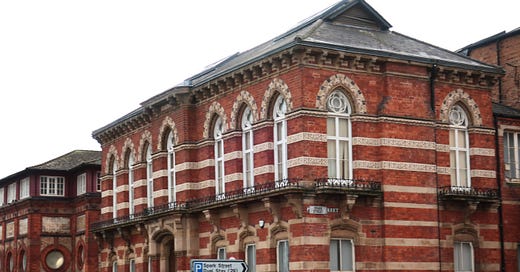




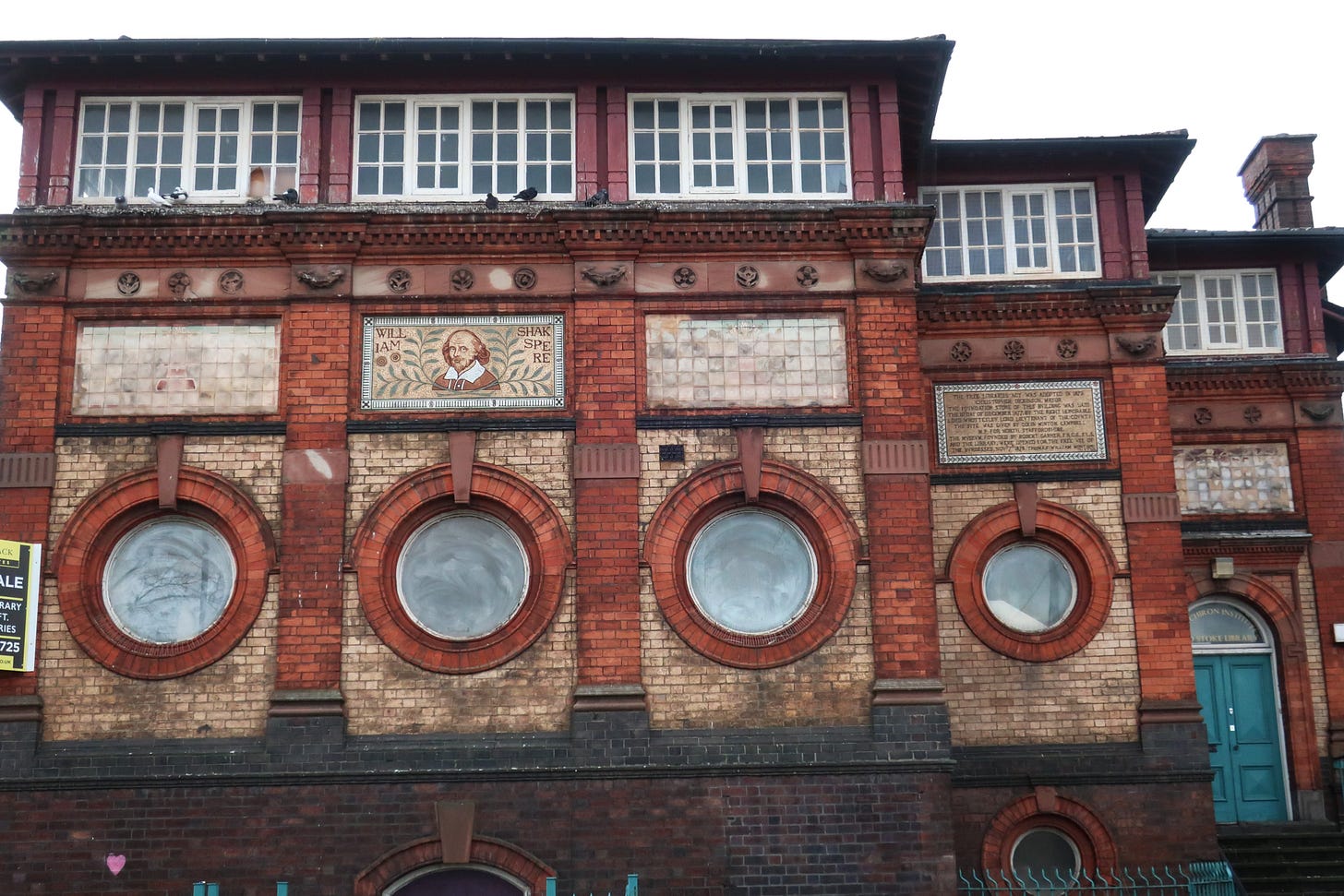
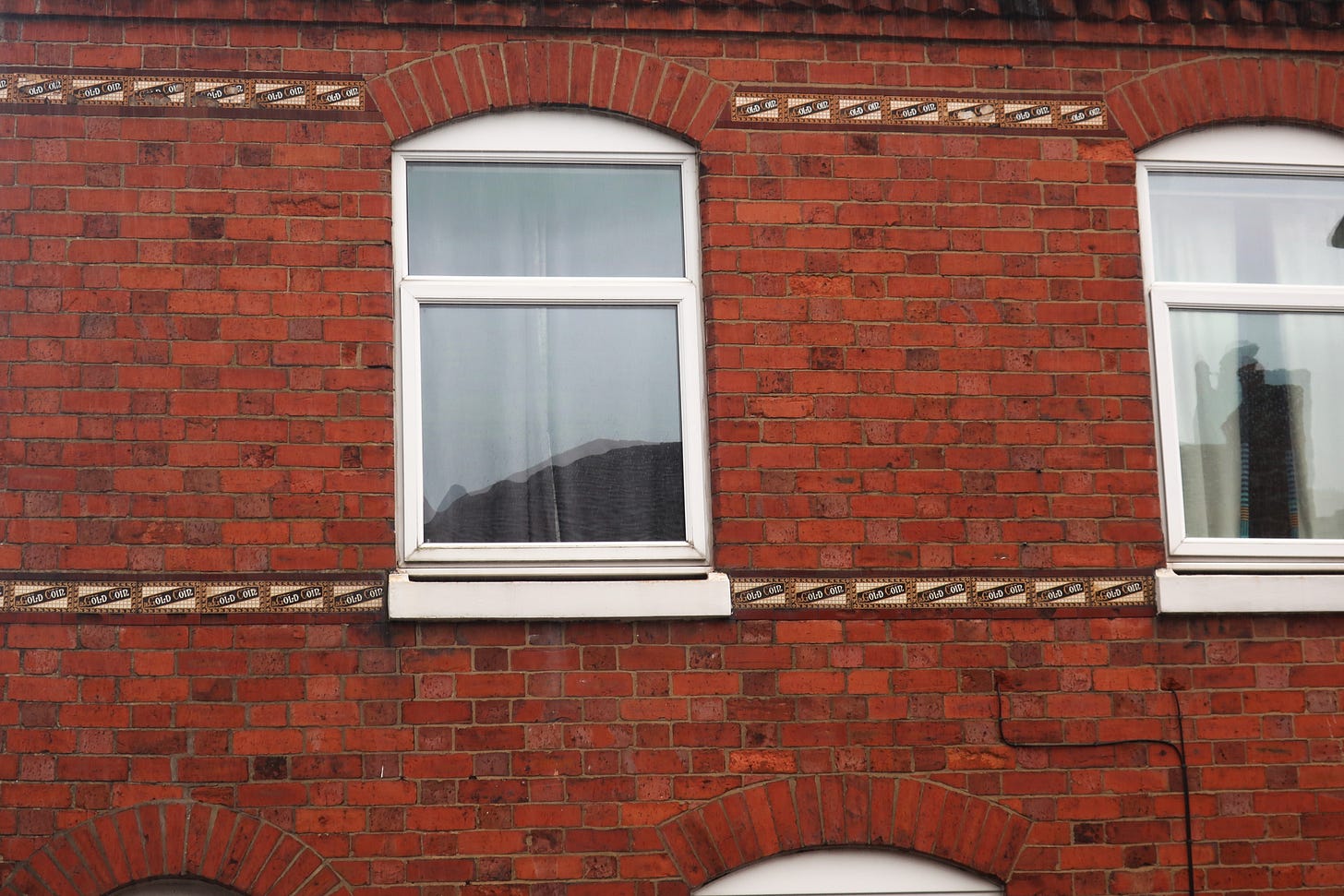
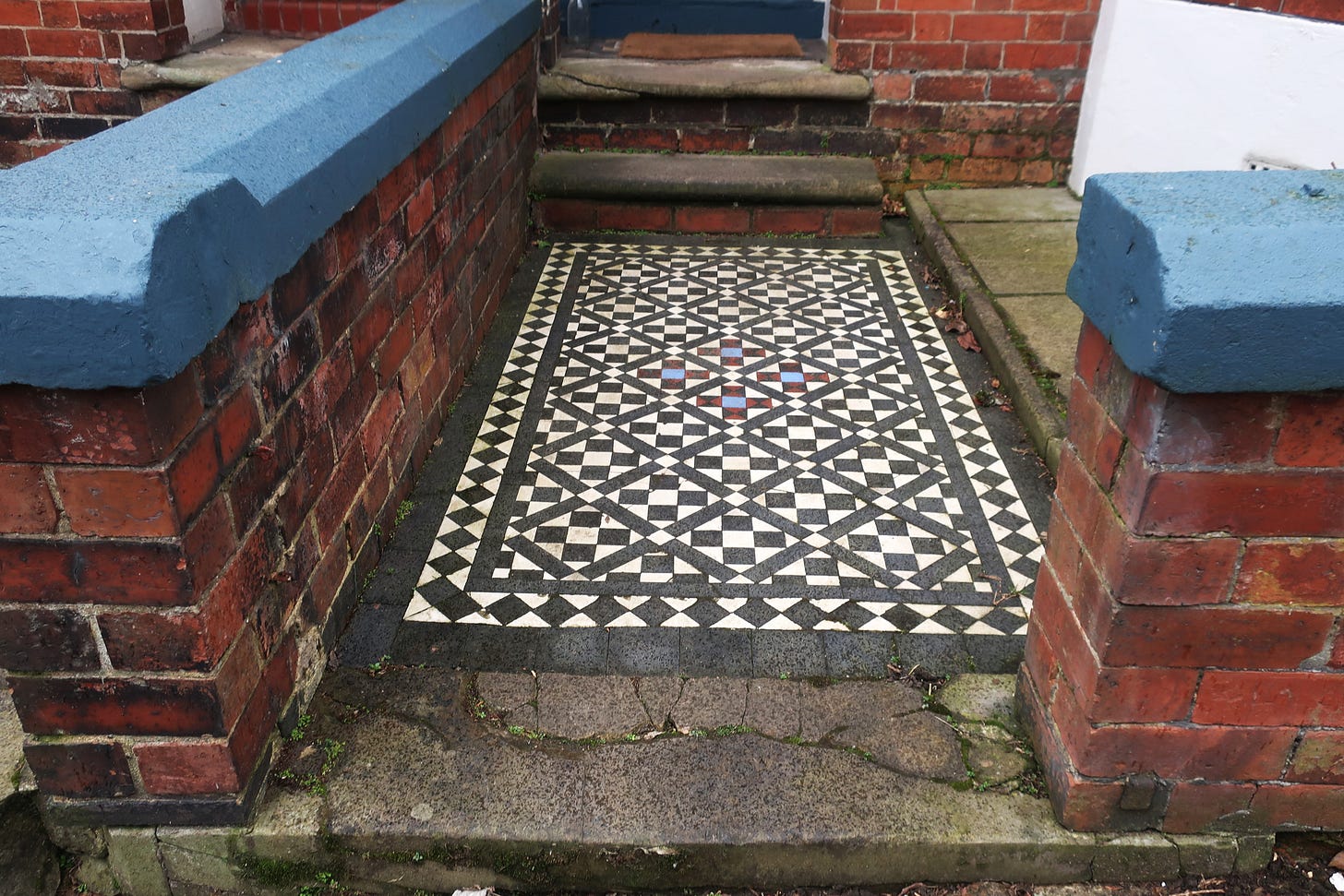
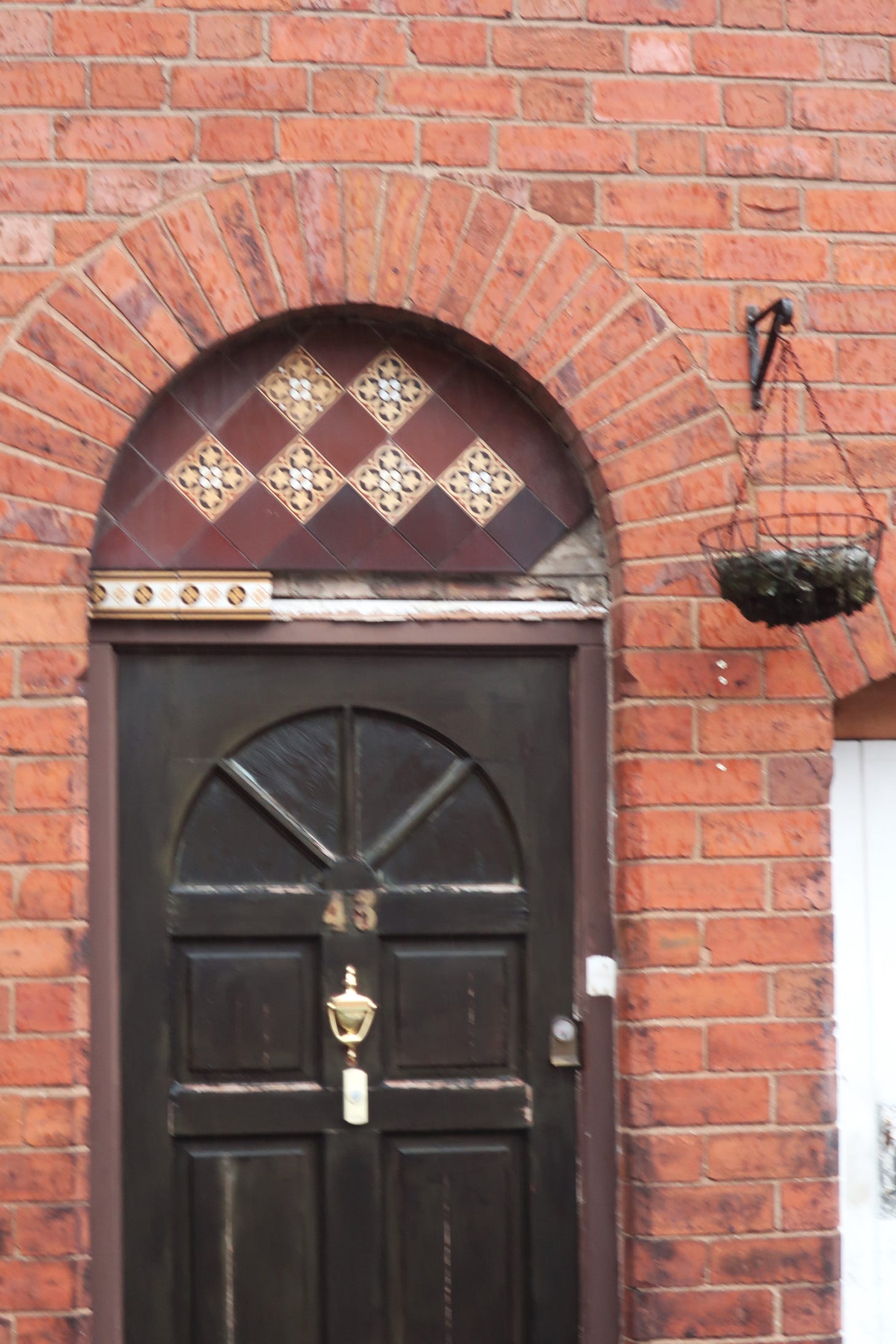
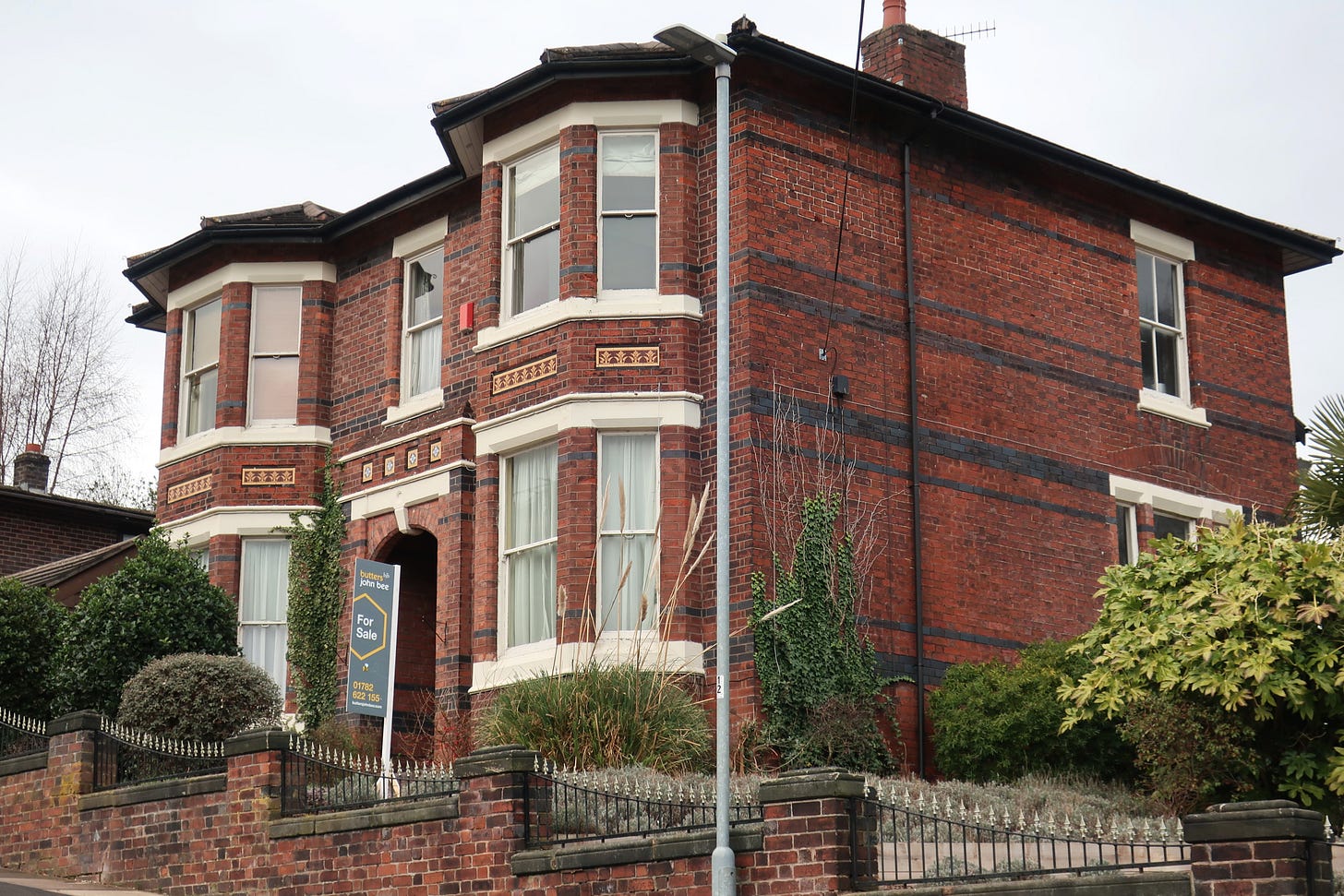
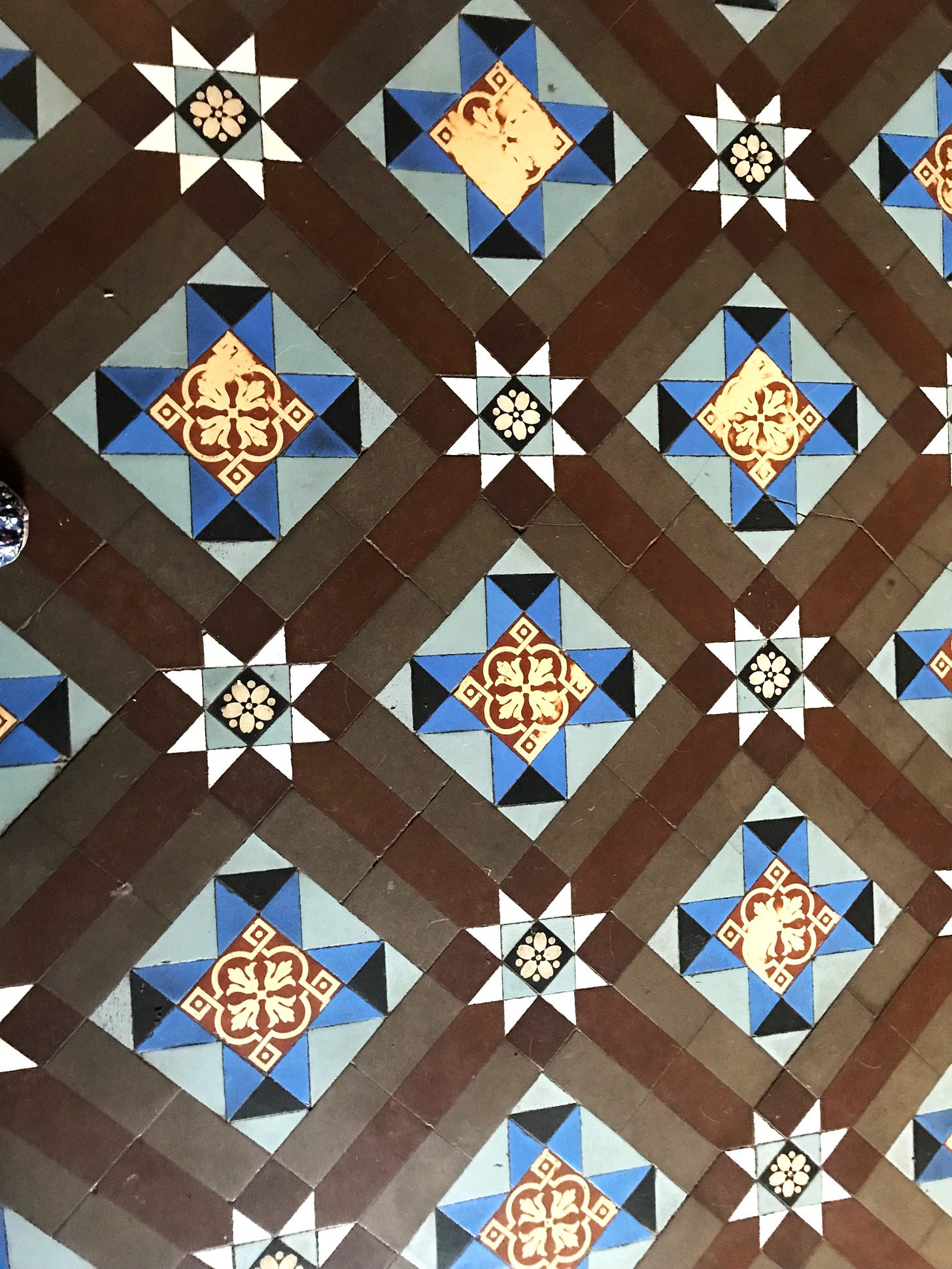
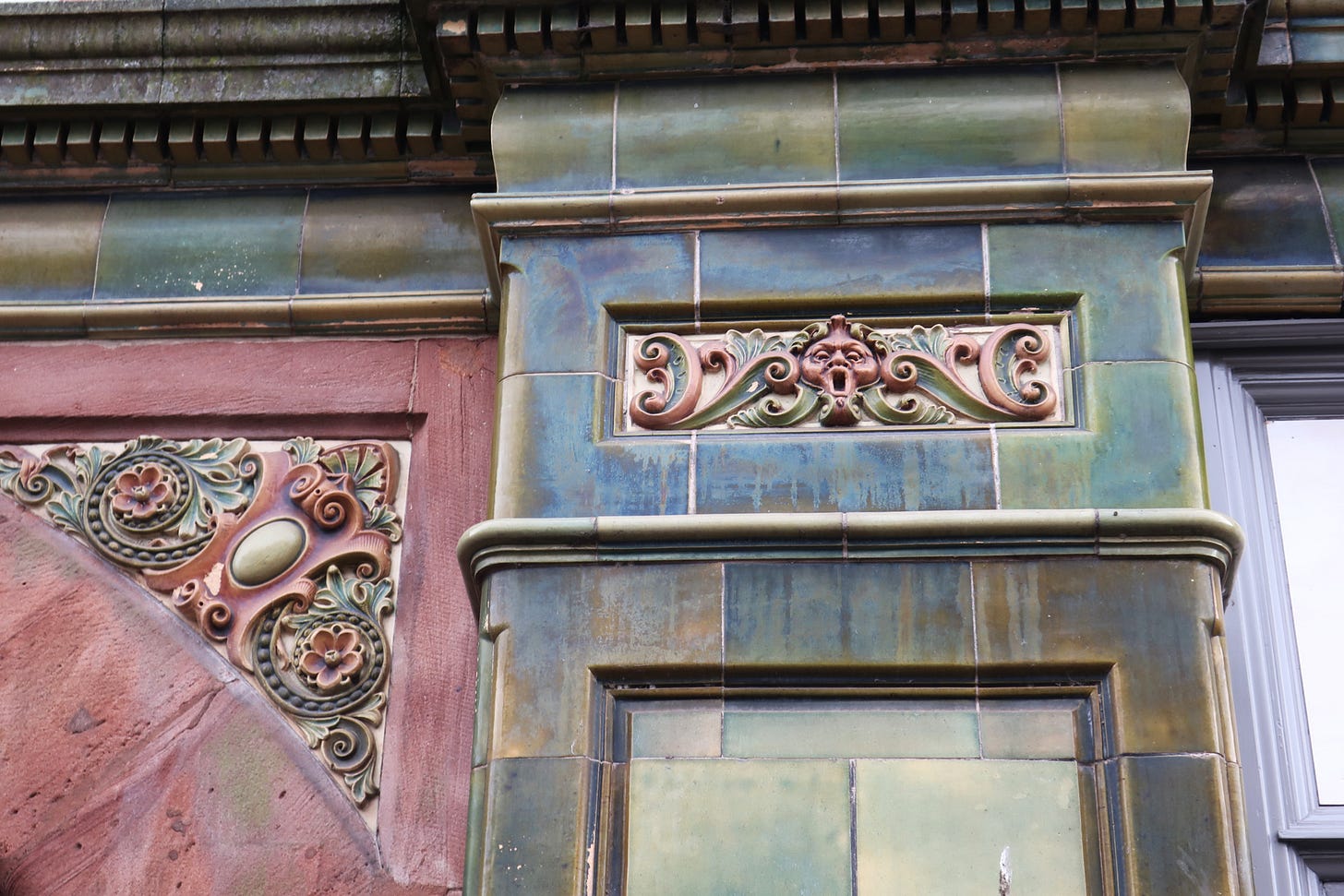
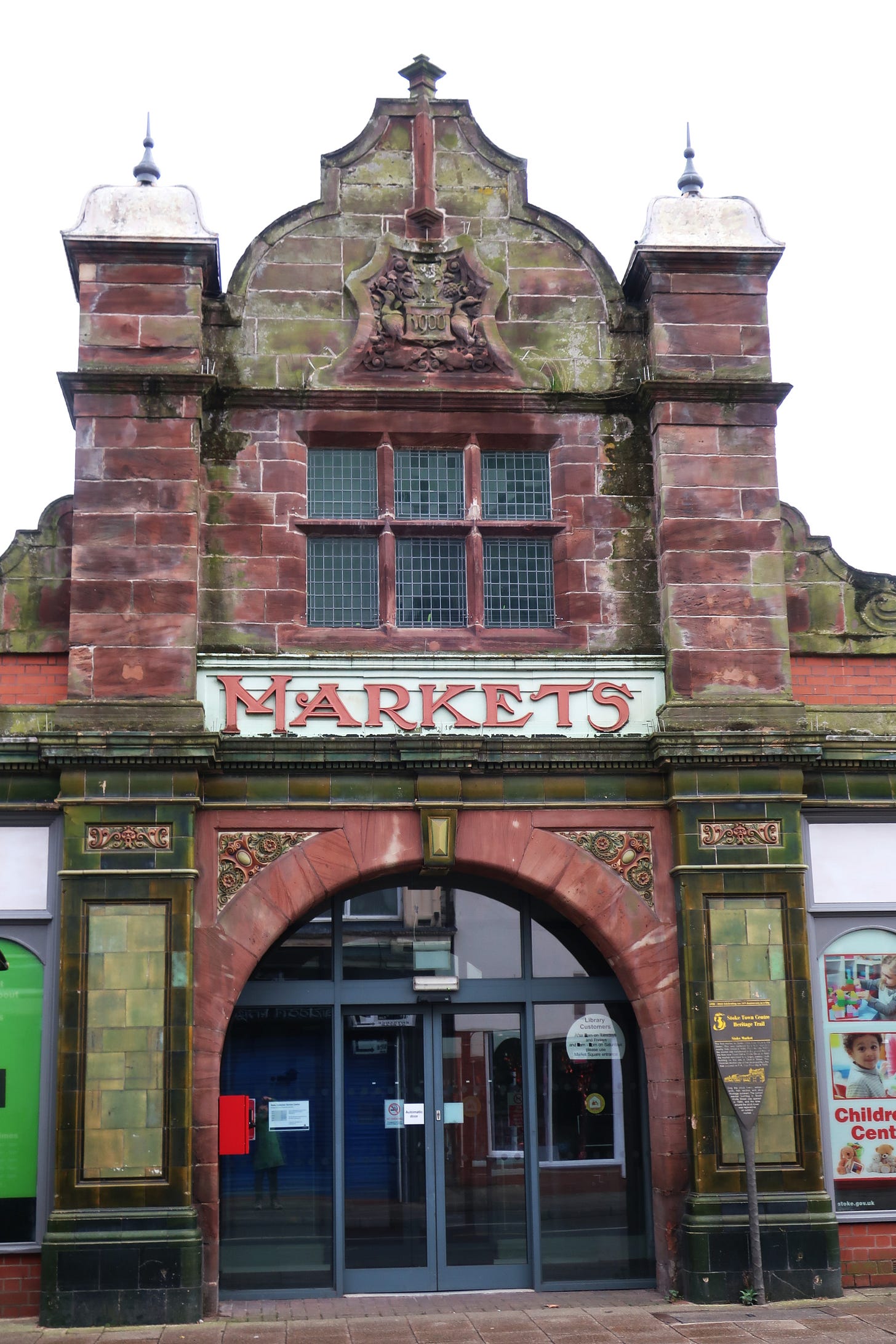
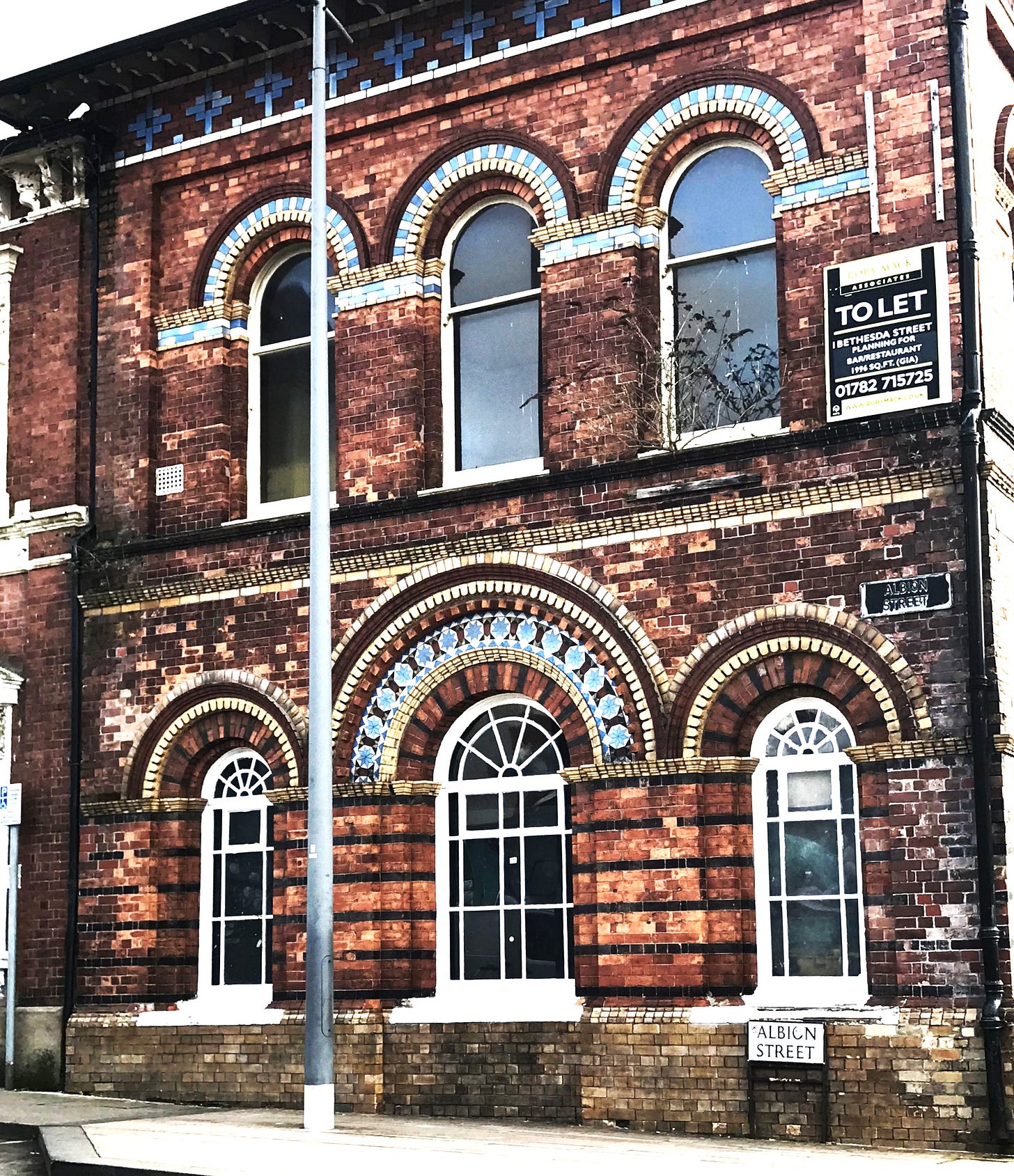
Stunning!